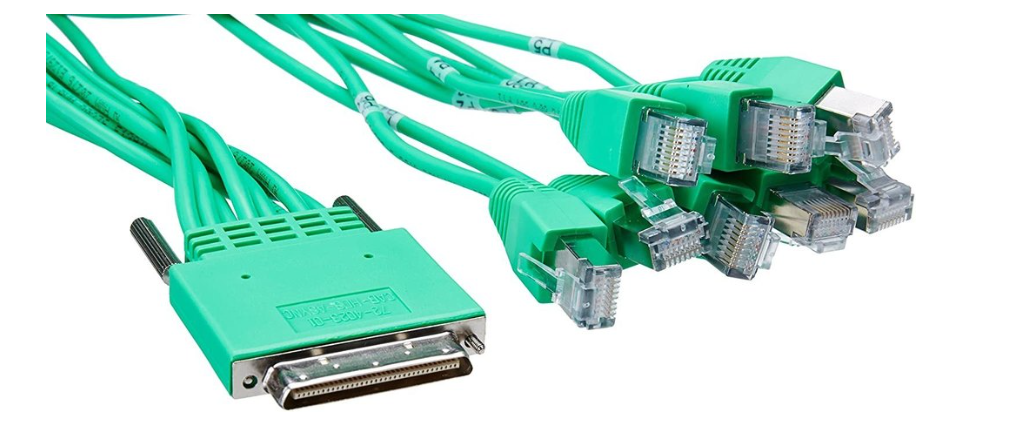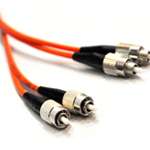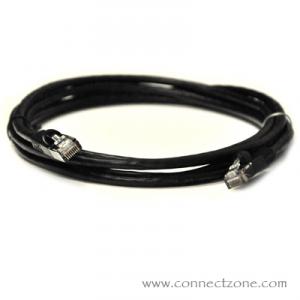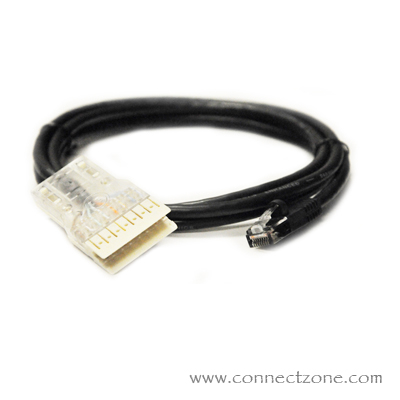We use cookies to make your experience better. Read more
Does High Back Reflection Influence Bandwidth in 10 Gig Systems?
 Does high backreflection affect the bandwidth carrying capability of OM3 and OM4 fibers, particularly in regard to quick-term mechanical connections?This is a question that customers have been asking us at Connectzone more and more lately and they are not alone in searching for answers. In today’s market there are many termination choices, with quick-term solutions becoming ever more attractive and prevalent due to their ease of use and relatively short training curve.
The debate tends to heat up when mechanical quick-term connectors are discussed. Traditionally, quick-term connectors can introduce backreflection due to the method in which the fiber is mated, namely by mechanical means. In contrast, newer “fusion splice” quick-term connectors drastically reduce or eliminate this reflective event due to the method in which they are attached, which is by fusion splicing.
Is it better to use a “fusion” splice-on connector over a “mechanical” splice-on connector? Although there are many standards and studies related to the effect that backreflection has on singlemode systems, a limited number of definitive studies have been done on the effects of backreflection in 10-gig multimode networks. However, in the hope of hedging our bets, “fusion” splice quick-terms appear to be the safer solution.
Traditionally the CATV and Telco industries have had to come to grips with the effects of backreflection in 10-gig fiber networks. The majority of the providers have relied heavily on the use of fusion splice-on Angled Physical Contact (APC) or Ultra Physical Contact (UPC) connectorized pigtails in their networks to minimize the effects of optical return loss (ORL). This helps to eliminate errors in the transmission of data and leads to a limited use of mechanical splices in these systems except in a temporary emergency restoration situation. It has been shown by testing that putting a potentially high reflective event such as a mechanical splice near a transmission laser can either damage the light source or cause a deterioration of the signal bandwidth being sent down the fiber by introducing a higher bit error rate (BER) in the signal. Or, the reflective event may limit the overall distance that a 10-gig signal will travel in the fiber.
Every time you choose to use a fusion splice connector in your network (instead of a mechanical splice connector) you eliminate the possibility of the above effects from happening. Five years from now you may have helped to future proof your network against advancing technology by allowing your installed fiber to maximize its potential today.
Follow me on Twitter and Facebook.
What are your thoughts on 10G optical fiber? Let us know in the comments below.
Does high backreflection affect the bandwidth carrying capability of OM3 and OM4 fibers, particularly in regard to quick-term mechanical connections?This is a question that customers have been asking us at Connectzone more and more lately and they are not alone in searching for answers. In today’s market there are many termination choices, with quick-term solutions becoming ever more attractive and prevalent due to their ease of use and relatively short training curve.
The debate tends to heat up when mechanical quick-term connectors are discussed. Traditionally, quick-term connectors can introduce backreflection due to the method in which the fiber is mated, namely by mechanical means. In contrast, newer “fusion splice” quick-term connectors drastically reduce or eliminate this reflective event due to the method in which they are attached, which is by fusion splicing.
Is it better to use a “fusion” splice-on connector over a “mechanical” splice-on connector? Although there are many standards and studies related to the effect that backreflection has on singlemode systems, a limited number of definitive studies have been done on the effects of backreflection in 10-gig multimode networks. However, in the hope of hedging our bets, “fusion” splice quick-terms appear to be the safer solution.
Traditionally the CATV and Telco industries have had to come to grips with the effects of backreflection in 10-gig fiber networks. The majority of the providers have relied heavily on the use of fusion splice-on Angled Physical Contact (APC) or Ultra Physical Contact (UPC) connectorized pigtails in their networks to minimize the effects of optical return loss (ORL). This helps to eliminate errors in the transmission of data and leads to a limited use of mechanical splices in these systems except in a temporary emergency restoration situation. It has been shown by testing that putting a potentially high reflective event such as a mechanical splice near a transmission laser can either damage the light source or cause a deterioration of the signal bandwidth being sent down the fiber by introducing a higher bit error rate (BER) in the signal. Or, the reflective event may limit the overall distance that a 10-gig signal will travel in the fiber.
Every time you choose to use a fusion splice connector in your network (instead of a mechanical splice connector) you eliminate the possibility of the above effects from happening. Five years from now you may have helped to future proof your network against advancing technology by allowing your installed fiber to maximize its potential today.
Follow me on Twitter and Facebook.
What are your thoughts on 10G optical fiber? Let us know in the comments below. 0 Comment(s)






